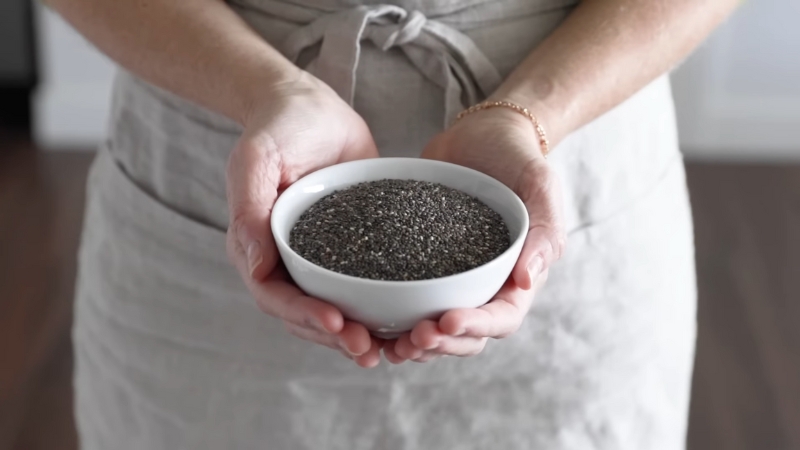
Share Post:
Let’s cut straight to it: the easiest muscle to grow is the calves. Yep, those often-overlooked muscles below your knees that everyone loves to hate. Despite their reputation for being stubborn, they actually have the highest potential for growth—if you train them correctly.
Table of Contents
ToggleThey’re built to take a beating, whether you’re walking, running, or hauling heavy loads. That means they’re primed to bulk up with the right approach.
Now, I know what you’re thinking: “Wait, aren’t calves notoriously hard to grow?” Sure, if you’re half-heartedly doing a few calf raises once a week. But when you train them with intention—heavy weights, high volume, and consistent effort—they blow up faster than you’d expect. Plus, they’re packed with fast-twitch muscle fibers that thrive on explosive movement and load.
Of course, calves aren’t the only muscles that respond well to training. Traps, quads, and delts also make the list of easy gainers. But if you’re looking for the most straightforward way to see growth, put some serious focus on your calves—and watch them transform from chicken legs to powerhouses.
1. Traps (Trapezius Muscles)
The trapezius muscles are those thick, meaty muscles running from your neck down to your mid-back. They’re the kind that make you look like a boulder on top of your shoulders, and they’re surprisingly eager to grow when trained properly.
Why Traps Grow Easily:
| Factor | Description |
| Heavy Lifting Bias | Traps get loaded with substantial weight during compound movements like deadlifts and shrugs. |
| High Stress Tolerance | These muscles can handle frequent, intense training without burning out. |
| Genetic Advantage | Some folks naturally have more developed traps, even without direct trap training. |
- Barbell Shrugs: Focus on heavy loads and a full range of motion. Aim for 3–4 sets of 8–12 reps.
- Farmer’s Walk: Carry heavy weights while walking. Great for trap activation and endurance.
- Rack Pulls: Partial deadlifts that focus on the upper back and traps. Use heavy weights and controlled movements.
- Heavy Deadlifts: One of the most powerful compound lifts, recruiting the traps along with multiple muscle groups.
Training Tips:
- Frequency: Train traps twice a week for optimal growth.
- Load Up: Don’t shy away from heavy weights. Traps thrive under pressure.
- Mind-Muscle Connection: Actively squeeze your traps during each movement.
2. Quadriceps (Front Thigh Muscles)

Quads are the powerhouse muscles located at the front of your thighs. Built to generate explosive power, they respond well to high volume and heavy loads. Quads are fundamental in both athletic performance and aesthetic appeal, adding that thick, muscular look to your legs.
Why Quads Grow Easily:
| Factor | Description |
| Heavy Loading Capacity | Quads handle intense stress from squats, lunges, and leg presses. |
| Big Muscle Group | Larger muscles naturally have more potential for size. |
| High Volume Tolerance | They can take frequent training without losing performance, making them easy to hypertrophy. |
- Back Squats: Go heavy and deep. Full range of motion activates more muscle fibers.
- Front Squats: Greater focus on the quads compared to back squats.
- Leg Press: Allows for heavy loading without stressing the lower back.
- Lunges: Excellent for unilateral strength and muscle activation.
- Leg Extensions: Isolation move to really burn out the quads at the end of your workout.
Training Tips:
- Volume Matters: 10–20 sets per week spread across multiple sessions.
- Mix Rep Ranges: Combine heavy low reps with moderate to high rep isolation work.
- Control Your Eccentric Phase: Lower the weight slowly to maximize muscle tension.
3. Deltoids (Shoulder Muscles)
Delts are the muscle group that gives your upper body a wide, powerful look. The three heads—anterior (front), lateral (side), and posterior (rear)—all contribute to that classic V-shape. They respond remarkably well to varied training angles and high volume.
Why Delts Grow Easily:
| Factor | Description |
| Versatile Fiber Composition | Contains both fast-twitch and slow-twitch fibers, allowing them to grow with various techniques. |
| Multi-Angle Training | Hitting delts from different directions maximizes activation and growth. |
| High Frequency Potential | Can be trained multiple times a week without risking overtraining. |
- Overhead Press: Focus on heavy weights to target the front and side delts.
- Lateral Raises: Great for building width and that capped shoulder look.
- Front Raises: Isolate the front delts, but don’t go too heavy to avoid shoulder strain.
- Face Pulls: Hit the rear delts and keep your shoulders healthy.
Training Tips:
Mix It Up: Don’t just rely on presses—add lateral and rear work to hit all heads.
Moderate Weights, High Volume: Delts respond well to 12–15 rep sets.
Keep the Form Clean: No swinging—focus on controlled, strict movements.
4. Biceps (Arm Muscles)

They might not be the biggest muscle group, but they’re undeniably the most showy. Luckily, they’re also relatively easy to grow with consistent effort and proper technique.
Why Biceps Grow Easily:
| Factor | Description |
| Frequent Usage | Biceps are recruited in many upper body exercises, including rows and pulls. |
| Fast-Twitch Dominance | Biceps are built for power, making them responsive to short, intense sets. |
| High Pump Potential | They engorge with blood easily, promoting muscle growth and strength gains. |
- Barbell Curls: Heavy and strict for maximum tension.
- Hammer Curls: Emphasizes the brachialis, giving your arms a thicker look.
- Concentration Curls: Isolate the biceps for a more focused pump.
- Chin-Ups: Bodyweight exercise that also gives your biceps a good beating.
5. Latissimus Dorsi (Back Muscles)
Your lats are what give your back that coveted V-taper. Wide, strong, and aesthetic, they’re a muscle group that tends to grow quickly with the right strategy.
Why Lats Grow Easily:
| Factor | Description |
| Powerful Pulling Muscles | They’re naturally strong and built for powerful pulling movements. |
| High Volume Friendly | Can be hit frequently without significant recovery issues. |
| Compound Movement Bias | Rows and pull-ups hit the lats hard, stimulating them with every heavy pull. |
Best Lat Exercises:
- Pull-Ups/Chin-Ups: Bread and butter for back width.
- Lat Pulldowns: Mimics pull-ups with adjustable resistance.
- Bent-Over Rows: Works the entire back while emphasizing the lats.
- Single-Arm Dumbbell Rows: Unilateral movement for balance and full range of motion.
Why Some Muscles Grow Faster Than Others
Before we single out the easiest muscle to grow, it’s worth knowing why some muscles bulk up faster than others. (Don’t worry—we’re not getting into nerdy science stuff. Just the useful bits.)
1. Muscle Fiber Types Matter
- Type I (Slow-Twitch): Endurance-focused, built for long, sustained activity (like jogging or cycling). Not the best for size gains.
- Type II (Fast-Twitch): Powerhouses designed for quick, explosive movements. These fibers bulk up fast when trained properly.
The more fast-twitch fibers a muscle has, the quicker it can grow. Simple as that.
2. Range of Motion and Mechanical Stress
Some muscles naturally have a better range of motion, which means they experience more mechanical stress during workouts.
3. Frequency and Volume: The Growth Recipe
Certain muscles can handle frequent workouts without burning out. (Think about how often you use your legs just walking around.) Training those muscles more often naturally leads to quicker growth compared to muscles that need longer recovery.
Common Mistakes That Stunt Muscle Growth

Building muscle isn’t just about hitting the gym hard—it’s about doing it smart. Plenty of people put in the hours, only to be left wondering why their muscles aren’t blowing up like they envisioned.
Often, it’s not a lack of effort, but a few sneaky mistakes that hold back progress. Let’s break down the most common muscle-building mistakes and how to steer clear of them.
1. Neglecting Frequency
You wouldn’t water a plant once a week and expect it to thrive, right? Same goes for your muscles.
| Mistake | Why It Stunts Growth | How to Fix It |
| Training Once a Week | Doesn’t provide consistent enough stimulation for growth | Train each muscle group at least 2-3 times per week |
| Long Gaps Between Sessions | Muscles lose the adaptation they gained from last session | Plan your workouts to maintain consistent frequency |
2. Lack of Progressive Overload
Muscles don’t just grow because you showed up. They need a reason to adapt, and that reason comes from progressive overload.
| Mistake | Why It Stunts Growth | How to Fix It |
| Sticking to Same Weights | Your muscles adapt to the load, resulting in no new growth | Increase weights or reps regularly, even if it’s just a small increment |
| Not Tracking Progress | Without data, it’s hard to know if you’re progressing or stagnating | Keep a workout journal or use a fitness app to track sets, reps, and weight |
| Skipping Compound Movements | Isolation exercises alone don’t create enough stress for substantial muscle gain | Prioritize compound lifts (like squats, deadlifts, and bench presses) as the foundation of your routine |
3. Underestimating Recovery
Growth doesn’t happen while you’re pounding the weights—it happens when your muscles are resting and rebuilding.
If you’re skimping on sleep, skipping rest days, or not giving your body enough fuel, you’re sabotaging your gains before they even have a chance to develop.
Also read Can Bodyweight Workouts Build Muscle? What to Expect?
| Mistake | Why It Stunts Growth | How to Fix It |
| Not Enough Sleep | Sleep is when most muscle repair and growth occur | Get 7-9 hours of quality sleep per night |
| Overtraining | Too much stress on muscles leads to breakdown instead of growth | Take scheduled rest days and deload weeks |
| Poor Nutrition | Lack of protein and calories prevents muscle recovery | Eat a balanced diet with plenty of protein and whole foods |
4. Too Little Variety
Doing the same routine over and over is like watching the same episode of a show every night—it gets stale fast. Your muscles get bored too.
| Mistake | Why It Stunts Growth | How to Fix It |
| Repeating the Same Routine | Your muscles adapt to the same movements, reducing stimulation | Switch exercises every 4-6 weeks to target different angles and fibers |
| Never Changing Rep Range | Sticking to one range (e.g., always 8-12 reps) limits muscle fiber activation | Alternate between strength (4-6 reps), hypertrophy (8-12 reps), and endurance (15+ reps) cycles |
| Ignoring Isolation Work | Relying solely on compound lifts can leave smaller muscles underdeveloped | Incorporate both compound and isolation movements for balanced muscle growth |
How to Maximize Muscle Growth (Even the Tough Ones)

Now that we know what to avoid, let’s talk about doing it right.
Muscle growth isn’t rocket science—it’s about consistently applying a few basic principles with the right mindset.
Here’s how to make even the most stubborn muscles grow.
1. Consistency Is Key
| Principle | Why It Works | How to Apply It |
| Regular Training | Muscles need consistent stress to grow | Follow a routine you can maintain week after week |
| Habit Building | Make lifting part of your lifestyle, not just a phase | Set achievable goals and track progress |
2. Master the Mind-Muscle Connection
| Technique | Why It Matters | How to Improve It |
| Slow Eccentrics | Lowering weight slowly increases muscle tension | Count 3-4 seconds on the eccentric part of each rep |
| Peak Contraction Holds | Squeezing at the peak builds muscle endurance and strength | Pause at the top for 1-2 seconds |
3. Fuel Your Gains
Your body needs the right building blocks to construct muscle tissue. That means plenty of protein, healthy fats, and complex carbs. Don’t underestimate the importance of eating enough.
| Factor | Optimal Amount | Best Sources |
| Protein | 1.6-2.2 grams per kilogram of body weight | Chicken, beef, tofu, fish, protein shakes |
| Carbohydrates | 3-5 grams per kilogram of body weight | Oats, rice, potatoes, whole grains |
| Fats | 20-35% of total calories | Avocado, nuts, olive oil, fatty fish |
4. Rest Like a Pro
Growth happens while you’re resting, not while you’re lifting. Maximize your downtime to let muscles rebuild stronger.
| Rest Strategy | Why It Works | How to Apply It |
| Quality Sleep | Improves muscle recovery and protein synthesis | Aim for 7-9 hours of uninterrupted sleep |
| Active Recovery | Low-intensity movement reduces soreness and stiffness | Light cardio, foam rolling, and stretching |
| Deload Weeks | Reduces accumulated fatigue and prevents burnout | Lower volume and intensity every 4-6 weeks |
Bottom Line
Building muscle isn’t just about pushing heavy weights—it’s about doing it smart.
Make every set count and keep your goals in sight. Your muscles aren’t just going to grow because you show up—they’ll grow because you show up with purpose and precision. Train hard, eat well, and give your body time to rebuild stronger.
Let’s grow!
Related Posts:
- Is It Time to Expand Your Gym? Signs You’re Ready to Grow
- Is Drinking Raw Eggs a Myth or a True Muscle…
- 5 Carbs for Muscle Building That Won’t Ruin Your Diet
- Muscle Memory Explained - Turning Practice into…
- Calf Muscle Strains - Symptoms, Causes, and Recovery…
- Best Post-Workout Recovery Hacks for Faster Muscle Repair













